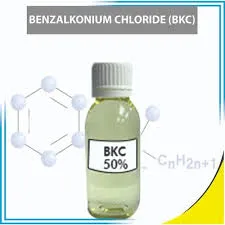use of poly aluminium chloride in water treatment
The Use of Poly Aluminium Chloride in Water Treatment
Water treatment is an essential process that ensures the provision of clean drinking water and the safe management of wastewater. Among the various coagulants used in the treatment process, Poly Aluminium Chloride (PAC) has emerged as a highly effective solution. PAC is a compound that involves a polymeric structure of aluminum, which makes it particularly beneficial in enhancing the water treatment process.
Chemical Composition and Properties
Poly Aluminium Chloride is a formulation composed of aluminum hydroxide and hydrochloric acid, resulting in an aluminum-based coagulant. PAC is characterized by its high charge density, which allows for better adsorption and bridging of particulates in the water. This property significantly improves the flocculation process. Furthermore, PAC is soluble in water and forms stable complexes, which promotes the agglomeration of suspended solids.
Advantages of PAC in Water Treatment
1. Enhanced Coagulation Efficiency One of the primary advantages of using Poly Aluminium Chloride is its superior coagulation capabilities. PAC operates effectively across a range of pH levels, making it versatile for diverse water qualities. Its high charge density facilitates the rapid aggregation of colloidal particles, leading to the formation of larger flocs that can be easily removed from the water.
2. Reduced Sludge Production Another compelling benefit of PAC over traditional coagulants like alum is its ability to produce less sludge. This reduction not only lowers disposal costs but also minimizes the footprint required for sludge management. Consequently, treatment facilities can operate more efficiently and sustainably.
use of poly aluminium chloride in water treatment

3. Improved Water Quality The use of PAC leads to better removal rates of impurities, including turbidity, organic matter, and certain contaminants. By enhancing the overall water quality, PAC helps in meeting stringent regulatory standards for drinking water and wastewater discharge.
4. Cost-Effectiveness While PAC may have a higher upfront cost compared to some other coagulants, its effectiveness in lower dosages can lead to cost savings in the long run. The reduced need for additional chemicals and the lower volume of sludge generated contribute to overall operational savings for water treatment facilities.
5. Compatibility with Other Chemicals PAC can be used in combination with other treatment chemicals, such as lime or ferric sulfate, to achieve specific water quality objectives. This flexibility allows for tailored treatment solutions that meet unique treatment challenges.
Applications of PAC in Water Treatment
Poly Aluminium Chloride is utilized in a variety of water treatment processes. It is commonly used in drinking water purification, wastewater treatment, and industrial water treatment systems. In drinking water treatment, PAC is instrumental in removing pathogens and organic pollutants, ensuring that the water is safe for consumption. In municipal wastewater treatment, PAC plays a critical role in enhancing the removal of suspended solids and biochemical oxygen demand (BOD).
Conclusion
The use of Poly Aluminium Chloride in water treatment is a prime example of how chemical advancements can lead to more efficient and effective processes. Its advantages, including enhanced coagulation efficiency, reduced sludge production, improved water quality, and cost-effectiveness, make PAC a preferred choice for many water treatment facilities worldwide. As the demand for clean and safe water continues to grow, the role of innovative coagulants like Poly Aluminium Chloride will be increasingly vital in addressing the challenges associated with water treatment. By embracing such technologies, we can move towards a more sustainable and efficient approach in managing our water resources.
-
Water Treatment with Flocculant Water TreatmentNewsJun.12,2025
-
Polymaleic AnhydrideNewsJun.12,2025
-
Polyaspartic AcidNewsJun.12,2025
-
Enhance Industrial Processes with IsothiazolinonesNewsJun.12,2025
-
Enhance Industrial Processes with PBTCA SolutionsNewsJun.12,2025
-
Dodecyldimethylbenzylammonium Chloride SolutionsNewsJun.12,2025





